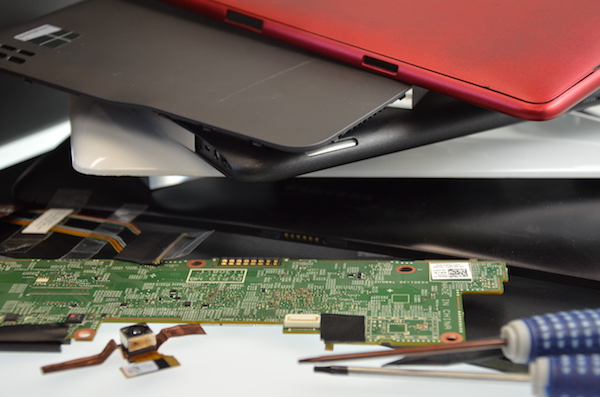Online study finds that product features are not primary criterion in consumer purchases
Fewer bells and whistles, longer lifetime please
Online study finds that product features are not primary criterion in consumer purchases
While the new technology presented last week at Berlin’s annual trade show IFA had product developers excited about a new wave of cutting-edge features and functionality for consumer electronics, a new survey suggests consumers would prefer a focus on improving stability, durability and robustness. The study by the TU Berlin’s Center for Technology and Society (CTS) investigated consumer expectations of and experiences with the operating time and lifetime of electronic products, particularly smart phones and washing machines.
Good battery life and robust construction emerged as the two most important features of smartphones, with nine out of 10 respondents naming these as key factors in their purchasing decisions, while a product’s features, brand and design are less important. For washing machines, durability was found to be as important as the criteria energy and water efficiency. “Although consumers look for long lifetime and 80% of respondents wanted more information on this, such specifications barely rate a mention in product promotion. Instead, manufacturers target consumers with a never-ending stream of “innovations”. The emphasis on new features in consumer electronics was indeed also criticized by the survey participants, 70% of whom described the continual roll-out of new models as fatiguing,” explains Dr. Melanie Jaeger-Erben, Head of the CTS research group that conducted the study. That product development is perhaps overestimating consumer interest in the latest bells and whistles is underlined by the survey finding that durability, robustness and reliability are important factors in purchasing decisions.
Consumers have limited understanding of proper care and handling, but are keen to learn
Consumers themselves can extend product lifetime with proper care and handling of their electronics. The CTS survey asked participants to provide free-text descriptions of how they care for and maintain their smartphones and washing machines. The responses showed a lack of know-how in product care. Less than 50% actively tried to improve durability, and a number of the care and handling steps named were either ineffectual or even damaging. For example, as the limiting factor in smartphone lifetime is often the battery, charging is a key step in product care. However, when the survey participants were asked to choose the proper charging technique from multiple choices, only about 40% correctly identified ensuring that the battery is never either fully charged or discharged. A third of users selected the opposite, fully charging and discharging the battery, as the correct answer— but this would in fact damage the battery over time. Sixteen percent were completely unaware that phone charging affects battery lifetime. However, the survey also found that consumers want to learn more about improving product lifetime. Over 80% would like to learn what proper care and handling to improve durability entails. Almost 70% even wanted more information on how to repair devices themselves.
Half of all disused smartphones end up in a drawer
What consumers do with devices they no longer use could also be improved. The survey found that almost half of all disused smartphones are thrown into a drawer and forgotten. “This actually costs consumers hard cash, because smartphones lose value over time,” says Dr. Jaeger-Erben. Ensuring the smartphone stays in use would also save key resources like precious and special metals. Overall, though, a significant proportion of respondents are already on the right track in this area. Twenty percent sell their disused phones, while another 20% give them away.
The representative online survey, carried out from July to August this year, polled 2000 individuals aged between 14 and 66 years. The study was performed as part of the junior research project “Obsolescence as challenge for sustainability — causes and alternatives”, which is a collaboration between the two TU institutions CTS and the Research Center for Microperipheric Technologies and the Fraunhofer Institute for Reliability and Microintegration IZM. The project is funded by the German federal ministry of education and research (BMBF) as part of its research focus on socioecological research.

Last modified:
 Fraunhofer Institute for Reliability and Microintegration IZM
Fraunhofer Institute for Reliability and Microintegration IZM